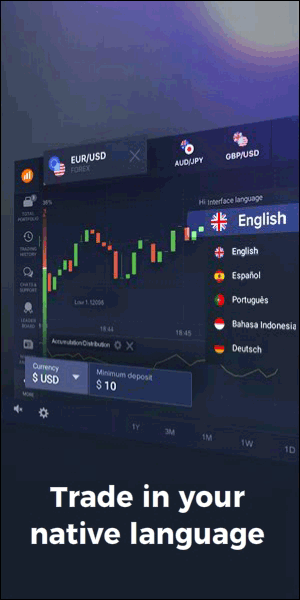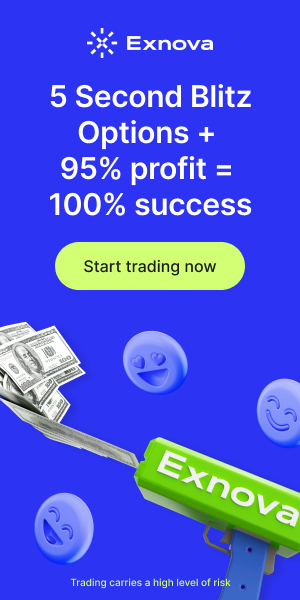Recently I was looking for a good article with tips for decent, cheap index trackers.
The list is as follows:
The UK’s best low cost index trackers
UK large cap equity
- iShares UK Equity Index Fund D (GB00B7C44X99) OCF 0.06%
UK mid cap equity
- Vanguard FTSE 250 ETF (VMID) OCF 0.1%
World equity
- L&G Global 100 Index Trust I (GB00B0CNH056) OCF 0.14%
World value equity
- Vanguard Global Value Factor ETF (VVAL) OCF 0.22%
International ex-UK equity
- L&G International Index Trust I (GB00B2Q6HW61) OCF 0.13%
Emerging markets equity (domiciled in UK)
- Fidelity Index Emerging Markets Fund W (GB00BLT1YT76) OCF 0.23%
- iShares Emerging Markets Equity Index Fund D (GB00B84DY642) OCF 0.24%
Please check the current charges as it may changed from the time I wrote this article.
If you would like to find out about alternatives to the ones above please have a look at the following article:
Low-cost index funds and ETFs that will save you money
Three Benefits of Cheap ETF’s For Your Portfolio
Many investors are interested in cheap ETF’s for your portfolio, but how do you choose the best ones? Listed below are three benefits of cheap index funds. They’re liquid, reduce risk, and are far cheaper than mutual funds. Moreover, you can trade them without paying a commission. Read on to learn more about the benefits of cheap ETF’s for your portfolio. You may find them useful for your long-term buy-and-hold portfolio.
Low-cost index funds
To start your investment journey, consider low-cost index funds for your portfolio. These investments track the indexes of all publicly traded U.S. companies and are a great choice for ultra-minimalists, who want exposure to the entire U.S. stock market. If you want a more diversified portfolio, try an S&P 500 index fund, which offers diversified exposure to the most well-known U.S. companies. Another way to structure a low-cost index fund portfolio is to choose funds by market segment. The difference between low-cost index funds and low-cost funds is the dividend yields of each fund.
When evaluating low-cost index funds for your portfolio, look for those with the lowest expense ratio. The expense ratio represents what investors pay to manage the fund. This includes administration costs, portfolio management, and any other related costs. Ideally, an index fund does not charge any additional expenses. To find the best low-cost index funds for your portfolio, do your research. If you don’t have the time to do research, you can purchase an index fund online or at your local brokerage.
In addition to low-cost index funds, you should choose funds with low management fees. Expense ratios are declining as fund providers compete with each other. These low-cost index funds will continue to provide excellent returns for your money, so you should look for them when choosing your investment strategy. And don’t worry about a lack of knowledge: automated investing is the best way to ensure your money is protected. Automated investing is easy to use and can accommodate investors of all risk levels and time frames.
In addition to low-cost index funds, you should consider diversified ETFs. ETFs can provide diversification for under $100. However, keep in mind that you’ll need to pay a commission to buy ETF shares. Some brokers still charge a commission on ETF trades, but this is slowly going to change and there’s no reason not to invest in fractional shares. With so many low-cost index funds available, the decision isn’t hard.
Index funds reduce investment risk
An index fund is an asset-management vehicle that tracks a preselected group of stocks and bonds. This allows investors to avoid large losses when a single stock or bond goes south. With individual stocks and bonds, the loss is usually much greater, as the index fund does not adjust its holdings every day. Also, index funds have fewer taxable capital gains distributions than actively managed funds. This lowers your tax bill and is one of the main reasons to use index funds for investing.
The problem with indexing, however, is that it may make American firms less competitive. Passive firms often control large stakes in multiple rivals, including banks, telecoms and airlines. Many analysts worry that passive firms might be eroding the competitive advantage of the Big Three. These index funds may be the solution to the problem, but there are risks to passive investing. In the meantime, many investors are turning to index funds as a safer way to invest.
Because index funds are diversified, they reduce the risk of losing money if a single stock drops. The funds own hundreds of securities, so even if the value of all stocks goes to zero, the fund won’t have lost any money. Investing in index funds is an excellent way to reduce the risk of your investments. However, you shouldn’t discount the benefits of active management. A well-run index fund should follow its underlying index closely so that its performance mirrors the underlying index.
Because index funds follow a passive approach to investing, they are usually low-cost. Because they don’t use a management team, index funds have lower costs than actively managed funds. Also, index funds often invest in hundreds of securities, whereas actively managed funds invest in only a handful of securities. These factors reduce their fees significantly. When choosing a fund, make sure to understand its fees. This will determine whether or not it is right for you.
They’re cheaper than mutual funds
There are many benefits of using cheap ETF’s for your portfolios, such as low annual management fees and expense ratios. Low fees do not mean a lower fund will be underperforming its peers, however. You can still do very well by targeting ETFs that offer good returns in comparison to their peers and benchmark indices. You can also invest in ETF’s that track indexes and save on fees.
Another benefit of using an ETF for your portfolio is that they have lower minimum purchase amounts than mutual funds. In contrast, mutual funds may require a minimum purchase of one share, and some brokerages offer fractional shares so that you can invest as little as twenty dollars. Some mutual funds charge early redemption fees, as well. Investing in an ETF is far cheaper than investing in an index fund.
Another benefit of using a cheap ETF for your portfolio is that it can offer better returns than mutual funds. The cost of operating an actively managed mutual fund is higher, so ETFs may be more profitable in the long run. The average fund costs 0.50 percent of its assets annually. This means that $10,000 invested in a mutual fund with a 0.5% annual operating expense would only yield $60,858 after 20 years. You can use the free Mutual Fund Cost Calculator to determine how much each ETF costs and see how much it costs. You can also learn about the different types of fees associated with mutual funds by visiting the Mutual Fund Glossary.
Another advantage of cheap ETF’s for your portfolio is their diversification. Most ETFs will include stocks of many different companies, which reduces your risk and eliminates the need for you to purchase numerous securities. Furthermore, ETF’s may also provide intraday trading, which may be more beneficial for some investors. However, if you’re not comfortable with that, you can consider a mutual fund instead.
They’re more liquid
If you are looking for a way to increase your stock portfolio’s liquidity, consider buying cheap ETF’s. These types of funds are often tied to a specific index, such as the S&P 500 or the Dow Jones industrial average. Unlike mutual funds, which require active management, index funds are computer-managed and have lower fees. This is because an index fund is a pool of stocks and can grow and shrink over time, so you’ll be less concerned with making the picks.
Liquidity is an important factor when comparing ETFs, which will determine which one will suit your needs best. Cheap ETF’s for your portfolio are those that trade frequently, while others are less liquid. Lower liquidity means more volatility, while higher liquidity means less volatility. You should look for ETFs with lower expense ratios if you’re a buy-and-hold investor. But if you’re an active investor and like to trade frequently, choose those with high liquidity.
Most ETFs are passively managed and track an index, but some investors prefer the hands-on management of mutual funds. Actively managed ETFs mimic mutual funds but tend to have higher fees. Some ETFs are gimmicky, so keep this in mind when choosing cheap ETF’s for your portfolio. Then again, the best cheap ETF’s may not be exactly what you’re looking for.
There are several ETFs that offer low expense ratios, and you should consider buying them instead of stocks. You can even get commission-free trading with some of them if you’re using a home platform, like Vanguard. Another good option is iShares or Schwab ETFs. There’s no reason why you shouldn’t have cheap ETF’s for your portfolio if you want to diversify your portfolio.
They provide diversification
If you’re a beginner looking for a way to invest in the stock market, cheap ETF’s are a good option. These exchange-traded funds (ETFs) offer diversification without the high cost and complexity of mutual funds. You can also buy and sell ETF’s on the Internet, just like you would with stocks. To invest in ETF’s, you can set up an online account, fund it with the ETFs you want to own, and indicate how many shares you would like to purchase.
ETF’s allow you to diversify your portfolio without spending a lot of money on research. Because they are designed to be cheap, you can buy an ETF any day of the week. The good news about ETFs is that they’re easy to convert into cash. Even though they’re easily convertible, investors should be aware that they’ll never outperform individual stocks, regardless of the ETF structure.
In order to achieve optimal diversification, you need to invest in a diverse portfolio. This means putting money into a variety of different industry sectors, companies, and countries. You should also look at the costs involved. Some ETFs are cheap, but you should make sure they don’t cost a fortune. You can find many cheap ETF’s online for a reasonable price. Just make sure that the funds you buy have a good track record, otherwise, you could be throwing away money.
Another good option is to buy an ETF that focuses on a particular asset class. This way, you can benefit from diversification by avoiding risky stocks. However, you should be aware that ETFs may require higher trading fees because they provide less information to traders. The price difference between the two ETFs can be significant, so it’s best to invest your money in a diverse ETF that specializes in that particular industry.







